












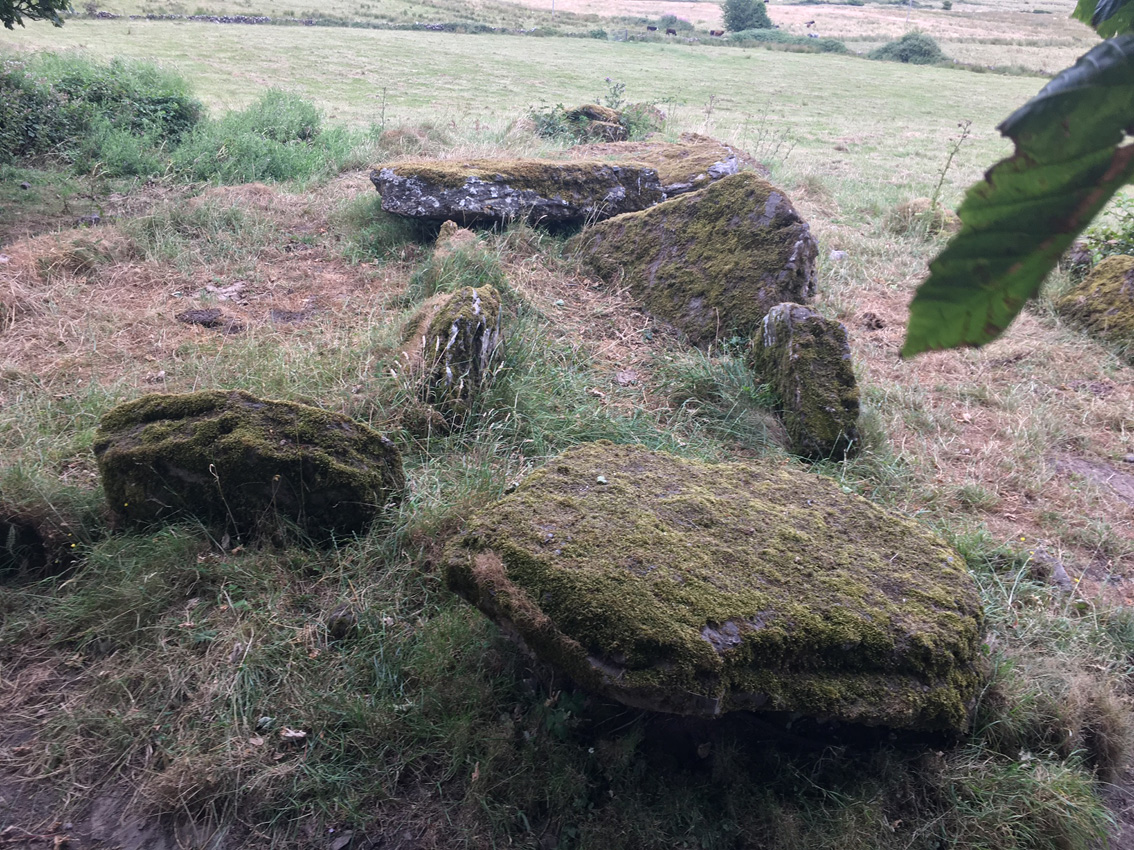


Nearly all the tombs we visited today had a tree sentinel.

The small, south-western tomb. There is no evidence left of a court.
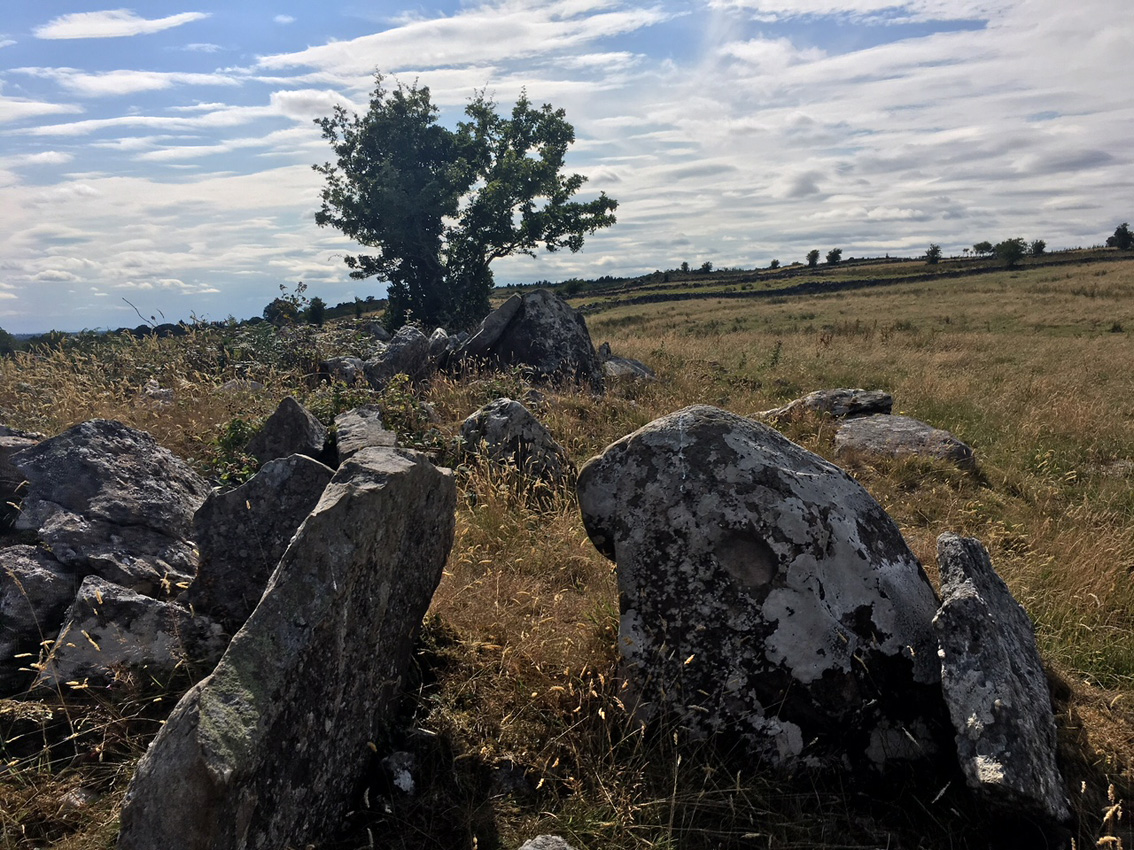

Pano of the remains. It’s pretty wrecked but fairly recognisable also.


Flaskagh More is a back-to-back dual-court tomb. Looking norteast over the small gallery of the south-western tomb. It’s backstone is immediately in front of us here. The next stone along is the backstone of the north-eastern tomb.
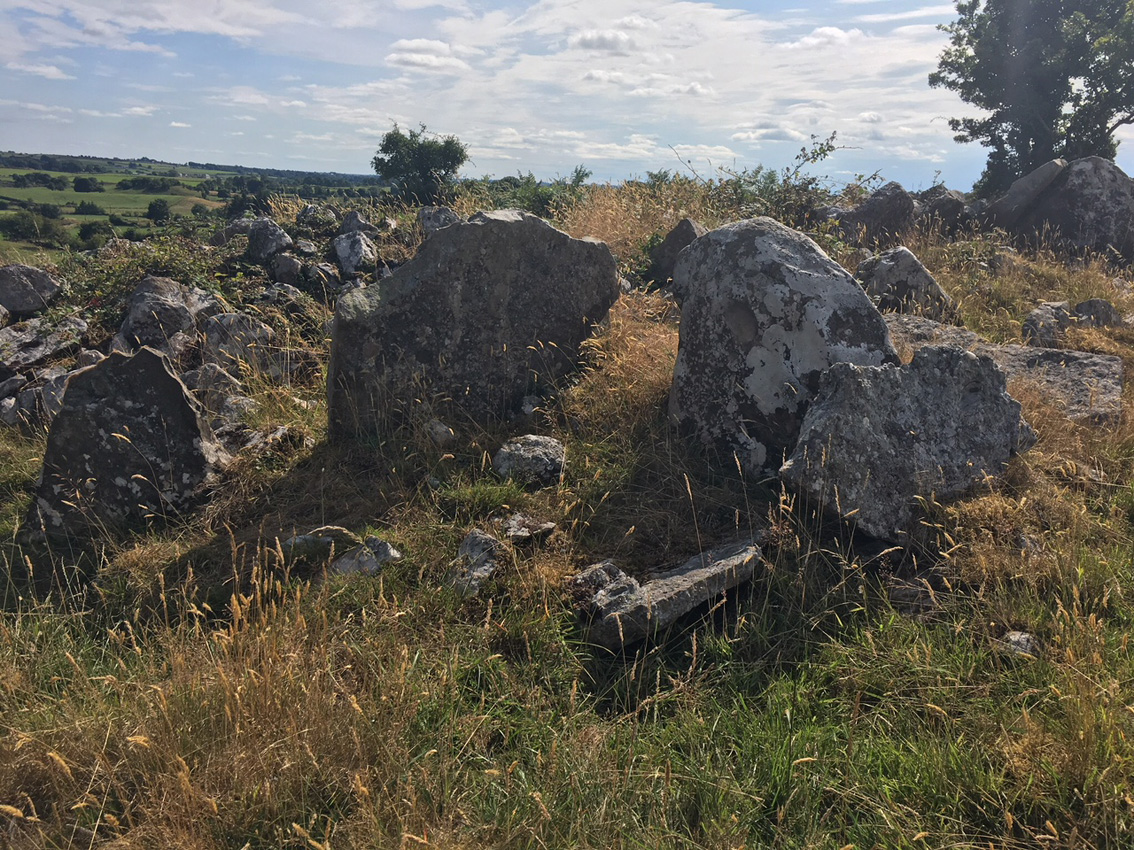
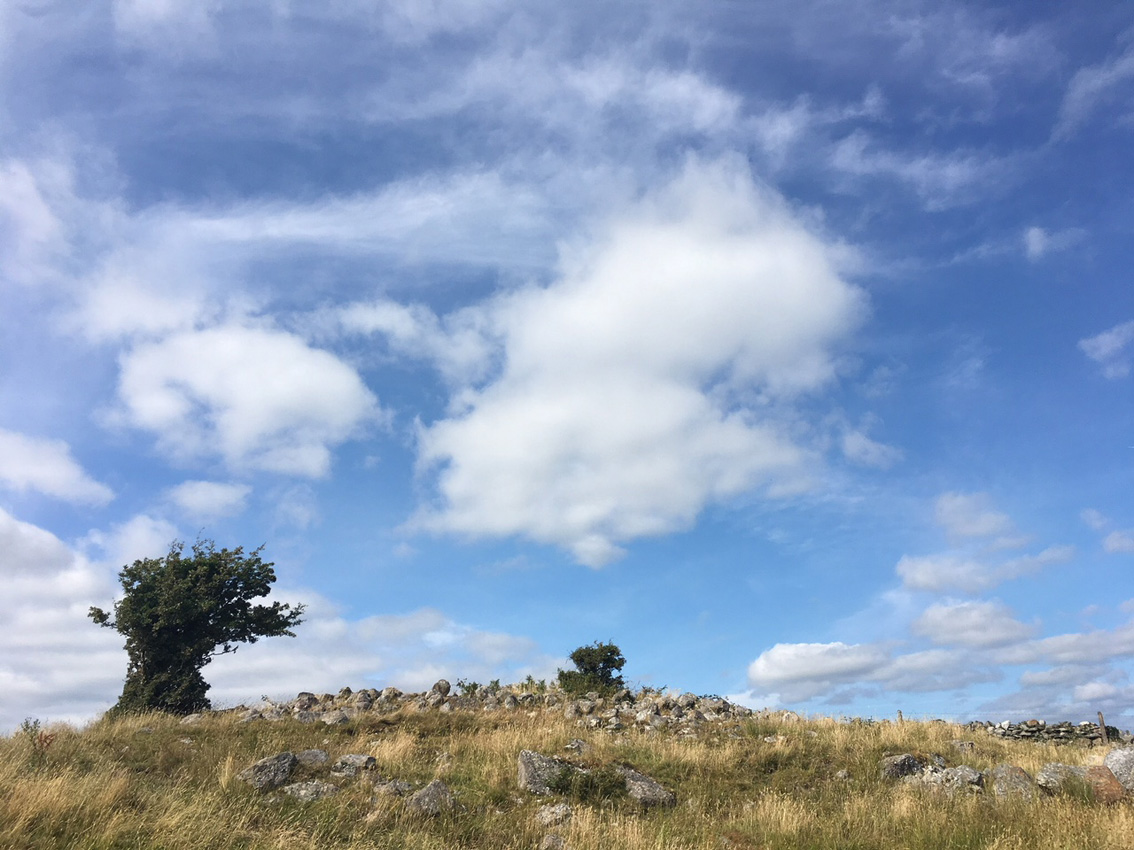


Again looking outwards towards the front of the tomb from almost at the rear.

Looking towards the front, along the gallery, with classic double-walling on the right.


Looking front on – as with all wedge tombs in this area, it’s aligned north-east/south-west.









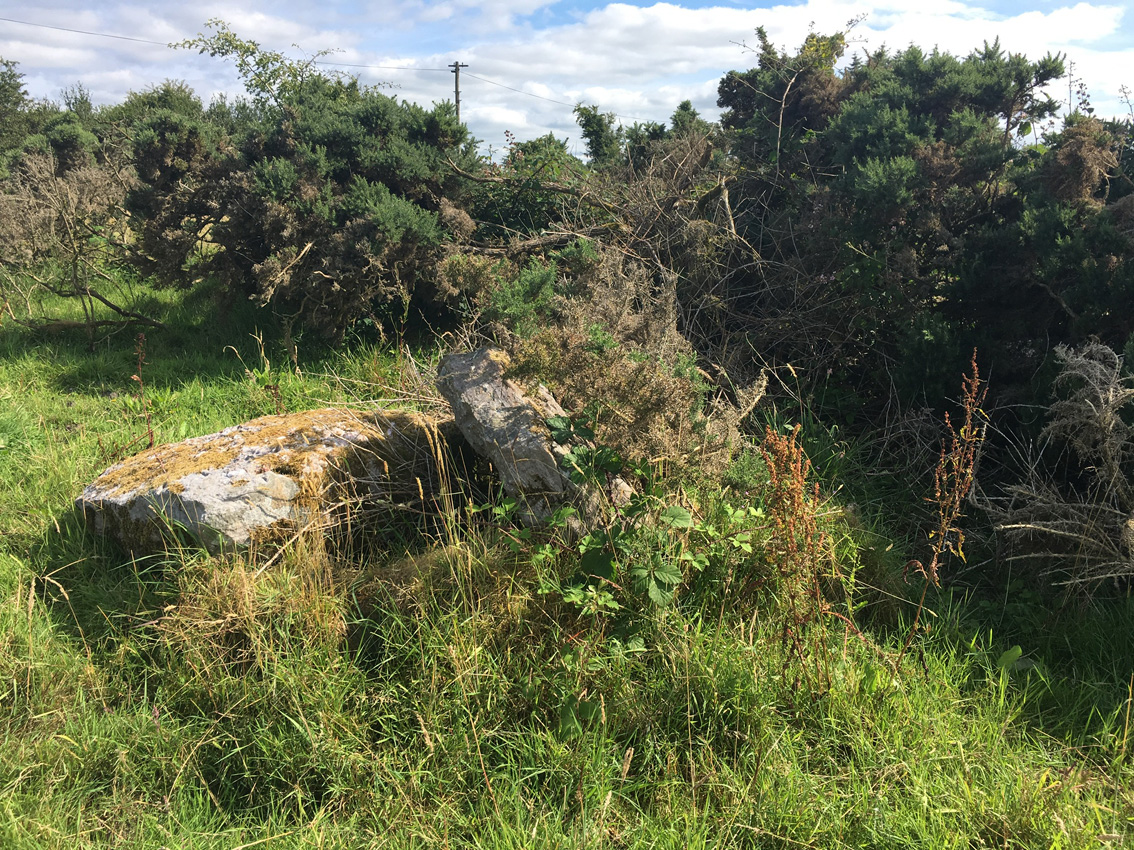
Listed as a wedge tomb in the Megalithic Tombs inventory, what’s left is little more than a cist.




This is a substantial wedge tomb – from the natural ground level to the top of the roofstone is about 2 metres.

We were surprised that this tomb is relatively unremarked on the web.

Looking directly at the front of the tomb. Most of this monument has survived intact, despite being in a pasture field.

The facade of the tomb. A rarity, much of the monument remains in its mound

From towards the rear of the tomb. Like most of the wedge tombs we visited today this one is oriented with the north-east/south-west.




A quartz encrusted, earthfast bulky boulder with a big bullaun. Just what I needed.

There is still water in the bowl even after our prolonged drought.
